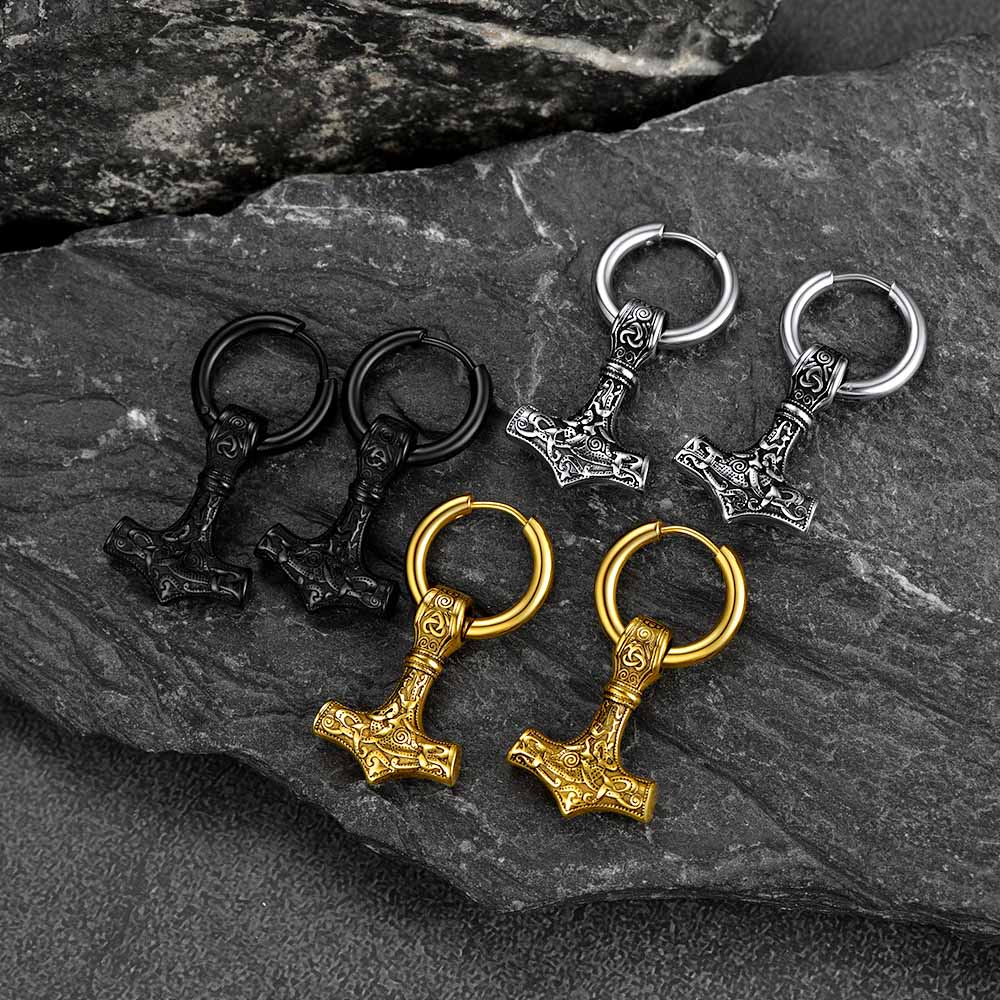Unraveling the Mystique: Discover the Alluring World of Viking Rings for Men
The Viking culture, renowned for its seafaring prowess and rich mythology, has always fascinated historians and enthusiasts alike. Among the many artifacts that represent this intriguing era, Viking rings for men stand out not merely as adornments but as powerful symbols of identity and status. Crafted with exceptional skill, these rings serve as tangible connections to a storied past, resonating with those who wear them. For many, donning a Viking ring is not just a fashion statement but an acknowledgment of heritage, a nod to the craftsmanship of ancient artisans, and a celebration of personal identity. Whether it’s the intricate designs or the deep-rooted meanings behind each piece, Viking rings encapsulate the allure of a bygone era, drawing modern men into their rich narrative.

The Historical Context of Viking Rings
The origins of Viking rings trace back to the early medieval period, specifically the Viking Age (approximately 793-1066 AD), when Norse society thrived across Scandinavia and beyond. These rings were not just decorative items; they played a crucial role in the social and economic fabric of Viking life. Often made from precious metals like silver, gold, and iron, they served as indicators of wealth and status. Archaeological findings, such as those from burial sites, have revealed that rings were frequently placed in graves alongside their owners, suggesting that they held significant personal value. Notable discoveries, such as the Viking treasure hoards in Sweden and Norway, showcase the craftsmanship and artistic flair of these ancient artisans. These rings often featured unique designs and inscriptions, shedding light on the societal structures, trade practices, and beliefs of the Viking people.
Symbolism and Meaning Behind Viking Rings
Within the realm of Viking rings, symbolism plays a vital role. Many rings were adorned with runes or mythological motifs that conveyed messages or invoked protection. Runes, the characters of the ancient Norse alphabet, were often engraved on rings to bestow luck, strength, or fidelity to the wearer. For instance, the "Algiz" rune symbolized protection, while the "Tiwaz" rune represented honor and courage. Additionally, motifs of animals, such as wolves or dragons, were common, reflecting the Vikings’ deep connection to nature and their myths. Today, these symbols have been reinterpreted, attracting individuals who seek to connect with the strength and resilience embodied by these ancient meanings. For many, wearing a Viking ring with a specific symbol is a way to channel the spirit of the Norse warriors, embodying attributes they admire.
Styles and Craftsmanship of Viking Rings
The craftsmanship of Viking rings is a testament to the skill of their makers. These rings varied widely in style, from simple bands to intricately designed pieces featuring elaborate patterns and engravings. Common materials included silver, gold, and iron, each chosen for its durability and aesthetic appeal. Silver rings, for instance, were often more accessible to the general populace, while gold rings were reserved for the elite. The intricate craftsmanship involved techniques like twisting, knotting, and inlaying stones, resulting in unique pieces that tell their own stories. Modern interpretations of Viking rings often draw inspiration from these ancient designs, incorporating contemporary materials and styles while retaining the spirit of the originals. Friends of mine who are artisans have mentioned the challenges and joys of recreating these designs, emphasizing the connection they feel to the history they are part of when crafting their pieces.
Modern Popularity and Usage of Viking Rings for Men
In recent years, there has been a resurgence in the popularity of Viking rings among modern men. This revival is fueled by a growing interest in Norse mythology, historical reenactments, and a general trend towards meaningful jewelry. Many men today wear Viking rings not only as fashion statements but as expressions of identity and personal values. The rings have found their place in popular culture, often appearing in films, television series, and literature, further cementing their allure. They appeal to those seeking to embrace their heritage or simply appreciate the artistry of these ancient pieces. Moreover, the community surrounding Viking culture has flourished, with gatherings and conventions celebrating Norse history, where enthusiasts can showcase their rings and share stories about their significance. The personal anecdotes shared among friends highlight how these rings are cherished for their beauty and the connections they foster within the community.
Connecting Modernity and Legacy through Viking Rings
The enduring legacy of Viking rings for men transcends time, weaving together threads of history, craftsmanship, and personal identity. These rings, steeped in rich symbolism and artistry, continue to captivate modern individuals, offering a unique way to connect with the past. For many, they serve as a reminder of the strength, resilience, and legacy of the Viking spirit. As we explore the world of Viking rings further, we uncover not just beautiful accessories but profound connections to our shared human history and the stories we all carry. Whether worn as a token of heritage or a stylish accessory, Viking rings remain timeless treasures that resonate deeply with those who choose to wear them.







